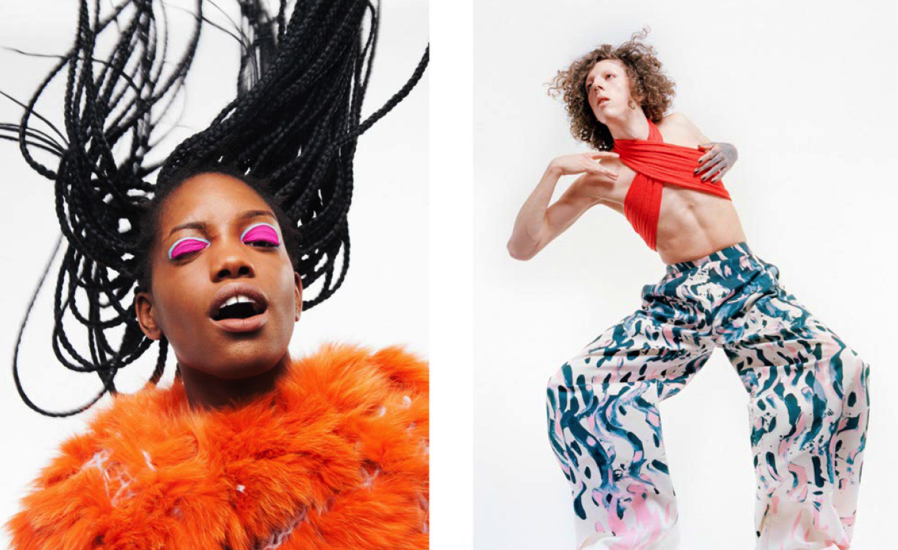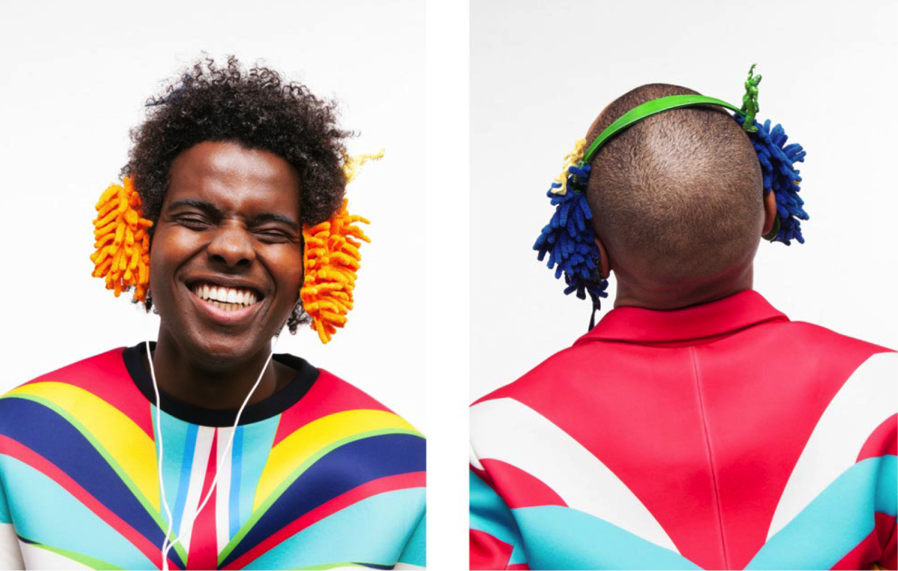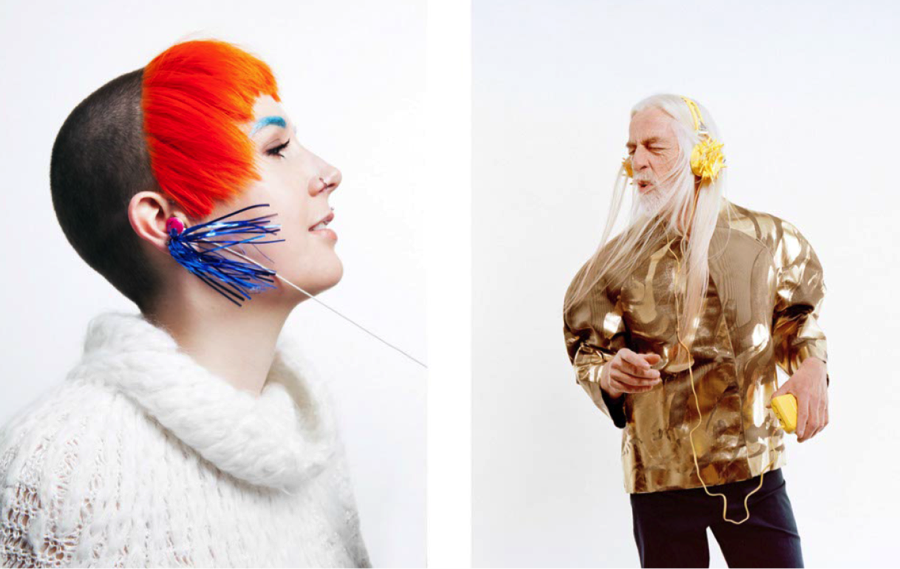“I’ve always been fascinated by other people,” says Professor Richard Crisp, the professor of Psychology at Aston University. “It’s easy to think that we’re all rational human beings, all of the time. But psychology investigates irrational human behavior: why we do things without thinking and when we are not rational. And that‘s so interesting to me.”
Richard and I are discussing the subject of diversity and why it matters. From a fashion perspective we all know it has currency. There’s the lack of diverse ethnicity on the catwalks or amongst high profile campaigns; the fashion normative body: tall, thin, young and err… white, not to mention the ubiquitous template of hyper-sexualized post-adolescent waif is ubiquitous, even tedious. There is also a stereotypical fashion boss with still too few females occupying CEO positions in womenswear and even fewer people of color elevated to positions of power within the industry as a whole. This has lead to break out fashion campaigns like All Walks Beyond the Catwalk and Naomi Campbell’s Diversity Coalition.
“I’ve always been interested in unfairness too,” Prof Crisp continues. “That someone could be disadvantaged as a member of a particular group, background or appearance, made me want to study why these biases exist. Racism has always struck me as incredibly unfair. That something as seemingly simple as an aspect of appearance would have such profound impact… this is my daily motivation. And through study we know there are various clearly defined psychological routes through which these biases are manifest.”
Prof Crisp has studied social psychology for 20 years. His book the Social Brain investigates human evolutionary diversity and its meaning in our lives. Today I want to fast forward to the 21st century to witness the enormous power of mass media and its influence, which some of us contest as a fixed prejudice around gender, race and age. But HOW to challenge it?
We come back to the brain.
“Our thinking and learning structures mean that in order to make sense of the world around it, the brain has to build theories and models to simplify processing. It does something really very clever… it looks for abstractions and patterns of behavior to help it cope. If it didn’t do this, we wouldn’t have a reliable bank of knowledge to fall back on.”

“Someone dressed as a paramedic at the scene of an emergency is likely to be able to deliver medical aid and this is a useful deduction. But problems arise when characteristics associated with different individuals or groups are applied uncritically.”
Lazy? YES. This is your brain in couch potato mode or as psychologists and devotees of Daniel Kahneman theory like to say: applying System 1 thinking.
“Information becomes highly generalized and if applied uncritically in every situation, a biased depiction can take root. The mind ends up embracing stereotypes which are not fair,” says Crisp. But now for the good news: System 2 thinking will save us.
“System 2 is more exploratory and this processing can allow for risks, because it takes a broader perspective on the world and helps us think ‘out of the box’.” I like to think of System 2 as the INNOVATION MUSCLE because this is the part of the brain you can stimulate through exposure to diversity. That’s what true diversity is. It’s not about reinforcing boundaries but it’s about challenging our expectations of the world around us. This is why diversity can lead to enhanced creativity and better problem solving. Put simply, when the innovation muscle is working it affects social perception, creativity, and opportunities for innovation.”
And this, young creatives, is what YOU excel in. Overriding System 1, you take your slobby couch potato head off to willingly engage System 2 thinking with all systems firing. Occupy a vigilant, rebellious, not to mention cool dude persona to critique the world around you and while you are at it, offer up your own unique, ground-breaking individuality and engage with others who can do the same.
Are you different to everyone else? RESULT. We need your brain in fashion now.
“In fashion…There is an impression of an industry permanently engaged creatively. But where something is done over and over again, it becomes the norm. It becomes convention. Creativity is about constantly thinking not about how something has been done before, and not how everyone else has been doing it, but how things can be done differently. If you expose yourself to diversity of ideas and concepts,” suggests Crisp, “if you step out of your comfort zone, surround yourself with others from different backgrounds, ethnicities, and cultures… then you’ll be setting the scene for creative thought. This is what the latest psychological research is telling us.”
Get your brain pumping and engage in a kind of intellectual gymnastics but be ready to truly embrace difference, not just tolerate or pay lip service to difference. Why?
“Well, TRUE diversity from a psychological perspective is not just bringing in different people and creating environments where we are exposed to different perspectives. The all-important element is engaging, talking, collaborating, and embracing. There has to be challenge to your perception and expectation about the way you do things,” insists Crisp.
“Diverse contributions have to be managed, directed and presented in a way that allows people to get the most out of the mix. Diversity in and of itself can represent division and may create social fault lines. People need tools to cross those boundaries and look beyond those divisions. If you have an organization and all the execs are males and all the work force is female that’s not diversity, that’s division.”
I think of my friend Jody Furlong at The Eye Casting, a stylish dreadlocked cultural commentator and casting agent. I’ve lost count of the times he has told stories of clients neglecting to chose a single model of color from his diverse casting of street models and then — when it is tactfully pointed out to the all white creative team — that they have created an all white marketing invitation, there is a small shift to allow in the black DJ at the edge of the picture. If we have casting directors and clients who are not diverse and consumer communities who are, well, that’s division too — and it has to be called. There’s good news: the tools are at our fingertips. It’s down to you exercising the innovation muscle and overriding lazy thinking — literally!
‘Yes,” says Crisp, “we can find division everywhere. Take the corporate board level: if male directors have technical or financial oversight for the company and women executives oversee human resource policy… that’s arguably an example of gender division not gender diversity. Diversity has to cut across traditional role boundaries. People have to share and engage.”

For minorities on the front line there is excellent news here. Used to being challenged and embracing difference that is not of their comfort zone, anyone outside of dominant culture thinking will have higher creativity levels.
“Women and people of color have always had a certain amount of work to do to override a dominant culture response. My study on women engineers (Di Bella & Crisp 2016) supports the idea that diversity challenges convention and evokes the innovation muscle. Overcoming explicit or implicit stereotypes, views or expectations applied on the basis of gender, led to participants performing much better than a control group on a test of lateral thinking.”
“Putting aside those existing beliefs and prejudices and opening your mind is key. This is exactly the same process as coming up with a new business plan or a new idea in fashion. You have to put aside your existing biases. Indeed the research suggests that if we constantly challenge ourselves and keep our innovation muscle worked out and fit, then we can keep our minds agile and adaptive. But where there is anxiety of losing reputation, status and position, this can lead to less risk taking and a tendency for people to gravitate towards a set way of thinking.”
“It’s very easy to find yourself falling into this pattern of fixed thinking because on one level that’s what the mind is designed to do. We need to build up knowledge, and we should continue using System 1 because it provides knowledge, security, and comfort. But exercising the innovation muscle, that’s perhaps when we can really get the most out of life.”
The Male Midwife, the Lesbian Priest, the Black Father Christmas, the Trans school-pupil — being an individual and holding your ground is good for you but it’s also good for everyone else.
There is commercial success to be had too. Accolades are now heaped upon Jenji Kohan’s Orange is the New Black, Netflix’s most watched series. But an all female, racially diverse cast was never predicted to be a big hitter by traditional network commissioners. We go back to diverse representation in front and behind the lens.
So let’s apply it to fashion. The Diversity Network, a collaboration between Edinburgh College of Art (ECA) and All Walks Beyond the Catwalk, has been awarded ‘Research Networks in the Arts & Humanities’ funding for two years of activities in Scotland. “We will investigate facilitating a move away from digitally ‘perfected’ bodies,’ and underweight, youthful models, and expect to challenge thinking,” says its Director, Mal Burkinshaw. Anne Chaisty at Bournemouth University is another enlightened fashion academic encouraging her students to think outside the box and design for all body shapes and ages. Professor Ben Barry at Ryerson University in Toronto is doing the same. This is crucially important in the light industry announcements that consumer spending will slow down next year as inflation increases and new austerity measures begin to take hold.
Why? Because, from a psychological perspective the cult of the individual as unique and deserved of more empathic and bespoke invitation to purchase now has merit for commercial fashion company behavior. The straight fashion model is not enough and the understanding that diverse teams with diverse perspectives could help to maintain brand relevancy, directional perspective and profitability can be inferred here perhaps?
“As a social scientist I can only look at the data,” asserts Crisp. “This interview however is a really good example for me personally of doing something out of my comfort zone and challenging my own thinking. I’ve never talked to a fashion magazine before, but I’m getting this knowledge out to a broader range of readers, so I’m making connections that are way more diverse. Who knows what will happen as a result of this single action?”
Who knows indeed?
READ Cool Psychology: A Look Into Fashion From A Psychological Perspective
READ Gender, Social Media, and Race: Where Next For Fashion?
Credits
Text Caryn Franklin
Images Dance to Your own Beat, the winning entry for the All Walks Beyond the Catwalk Diversity NOW 2015 competition.
Photography Eliska Kyselkova
Styling Dara Udom
Customised Headphones Andrea Katonova
Make-up Lauren Reynolds and Victoria Todd
Hair Vassilis Ioannou
Models wear clothes from a selection by Seth Yeung, Maria Piankov, Satu Maaranen, Young Hwan and Yang Shimo Zhou
Models Bruno Bonfirm, Cadao Nguyen and Viet Phan, Dara Udom, Duong Nguyen, Lauren Reynolds, Marlon Kameka, Michael Moon @TIAD, Terry @Real London Casting
